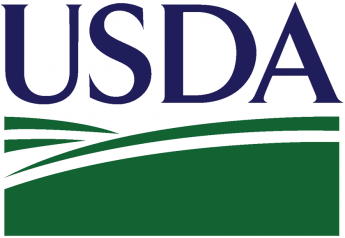Ahead of USDA's Prospective Planting Report: What's Driving Farmer's Acreage Decisions This Season?
2023 Acres 032823
Private estimates are being released ahead of this week’s USDA Prospective Plantings Report. The Pro Farmer – Doane annual spring planting survey results indicate more corn and near steady soybean acreage for 2023. Corn acres came in at 92.1 million, up 3.5 million acres from last year, with soybeans at 87.4 million acres, down just 100,000 acres. Other spring wheat and durum acres are projected to increase 1.6% to 12.7 million acres, which would put total wheat plantings at 49.6 million acres, up 4.9 million acres from last year. Farmers intend to plant 11.2 million acres to cotton, down nearly 2.6 million acres.
Farmers around the Corn Belt are anticipating a big year for corn, especially with improving soil moisture in corn-deficit areas where cash prices have remained strong.
"There's big demand with corn in our area, and we're seeing the corn basis much more attractive than the soybean basis," says Kevin Paap, a Garden City, Minn., farmer. "Corn yields have been maybe a little better compared with soybeans, so I think corn is going to see the push."
Ray Gaesser, who farms near Corning, Iowa, says they are going to stay with their 50-50 rotation. "Talking with some of our loan officers, they're showing us there is a little bit more corn going to be grown in our area of southwest Iowa than we've had in the past couple of years," he says.
Many farmers have already made the decision to plant corn after they were able to make fertilizer applications in the fall. Nik Jakob, who farms near Sterling, Ill., says they flexed more acres in the past but were able to get a lot of their fall work done. "That cements our rotation a little bit more for the spring," he says.
The corn-soybean price ratio also favors corn, and some fertilizer product prices have dropped that might also entice a few more corn acres this spring, according to Centerville, S.D., farmer Tim Ostrem. "There are some people that may consider doing a little bit extra corn because right now, with the price of urea dropping a little bit, I think there'll be a temptation to plant some more corn," he says.
In hard red winter wheat areas, farmers planted 2.2 million more acres last fall. Some of those came at the expense of cotton due to the drought and high crop insurance guarantees for wheat. Some of those acres might be abandoned, but others will be double cropped.
"We try real hard not to change our rotation," says Dan Vitt who farms near at St. Paul in the southeast corner of Kansas. "The only thing that may change a little bit is we probably put a few more acres of wheat in last fall than we have in the past. We'll have more double-crop soybeans, but our corn acres are basically the same."
In the Southeast, farmers also planted 1.3 million more acres of soft red winter wheat, which may be doubled cropped to soybeans. Brent Gatton of Breman, Ky., was one farmer who decided against it for several reasons. "Based on what it has been costing to buy nitrogen, plus nitrogen has been so variable here lately, we really weren't sure where we were going to be input-wise and we can do so much better on our full-season beans versus double crop. We just really didn't feel like it was worth the risk."
The big key is the weather, with planting delays already expected in the north that may limit spring wheat, durum and corn acres in favor of more soybeans.
Tom Haag farms near Eden Valley, Minn., where they have seen excessive snowfall this winter. "I think a lot depends on what kind of spring we have. Are we going to get in by our normal planting date of the end of April to get or is it going to be late again?"
Farmers in the eastern Corn Belt are also seeing excessive moisture, which may make it difficult to plant more corn. Like usual, Mother Nature will have the final say.







